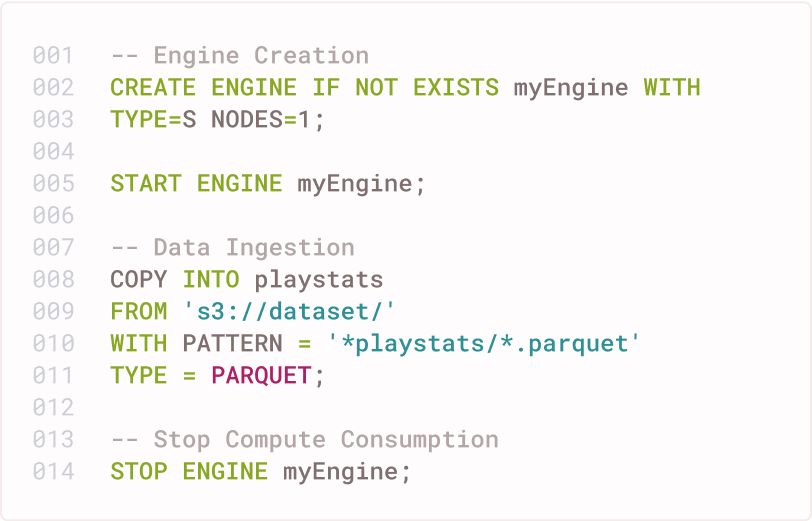Firebolt Unit is a normalized rate of consumption, such that consumption scales linearly with the capacity of your engine across all three dimensions: type of node, number of nodes, and number of clusters; consumption is proportional to the FBU of the engine and the run time. Thanks to Firebolt’s multidimensional scaling, per-second billing, and auto-stop/start capabilities, compute consumption can be a fraction of a minute. FBU eliminates the need to keep track of individual node types, nodes, and the number of clusters. There’s no binding to specific instance types, so you are free to use pre-paid credits on any node type.
Close



























